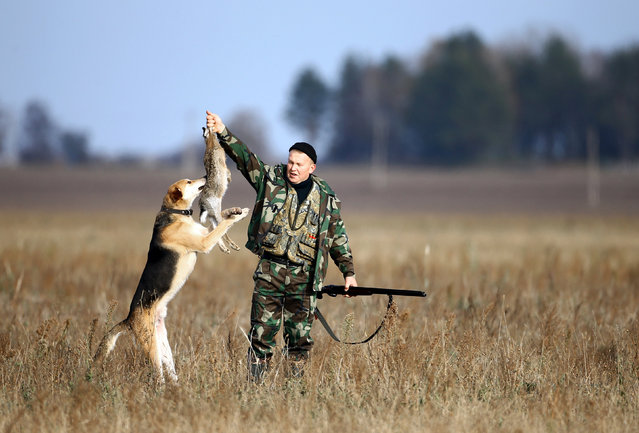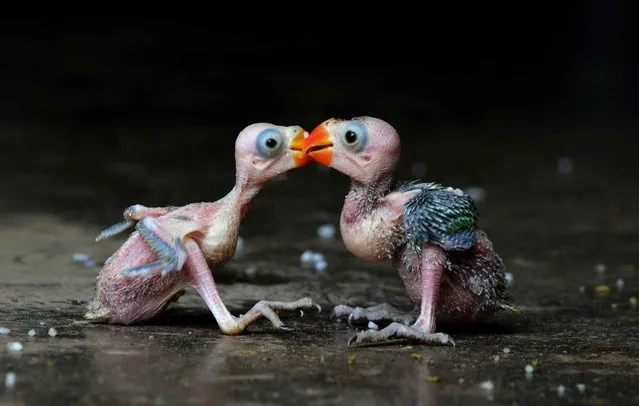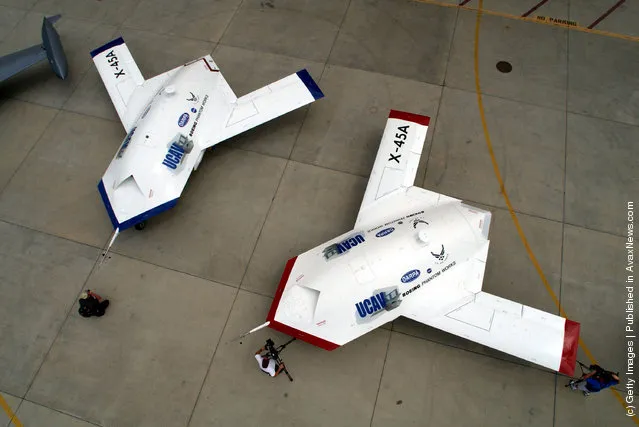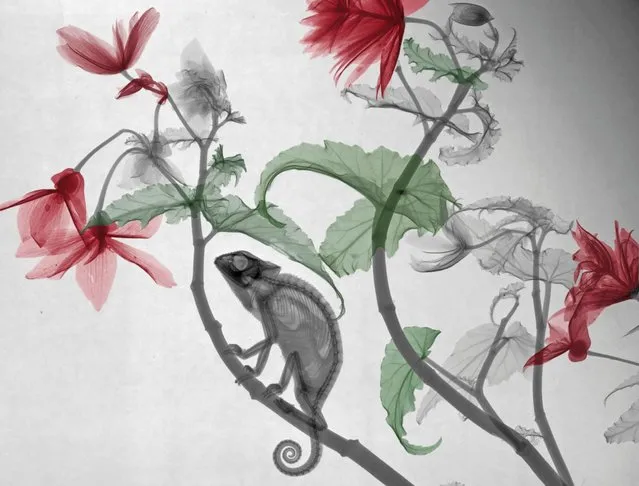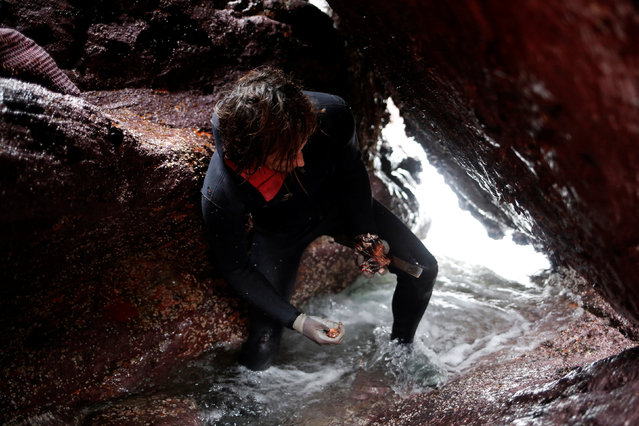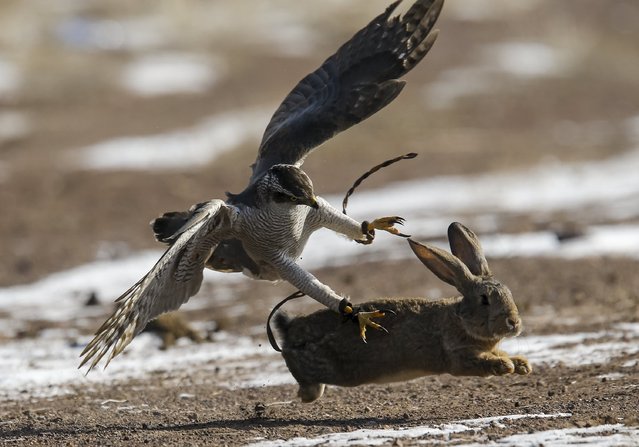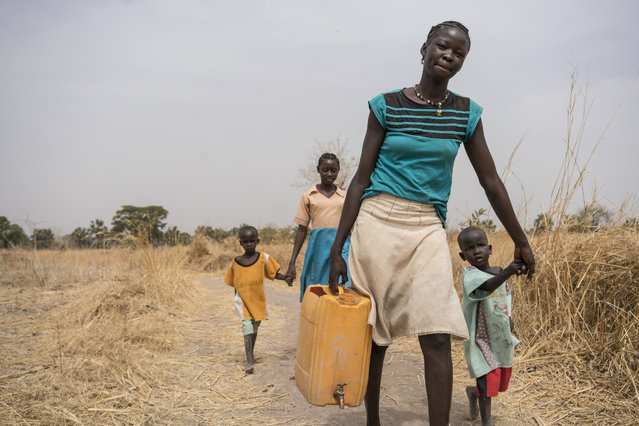
In this photo taken Sunday, March 12, 2017, a girl Abuk walks home with her brothers and friends after collecting clean water from a water point four kilometers away from her home, in Aweil, in South Sudan. As World Water Day approaches on March 22, more than 5 million people in South Sudan, do not have access to safe, clean water, compounding the problems of famine and civil war, according to the UNICEF. (Photo by Mackenzie Knowles-Coursin/UNICEF via AP Photo)
